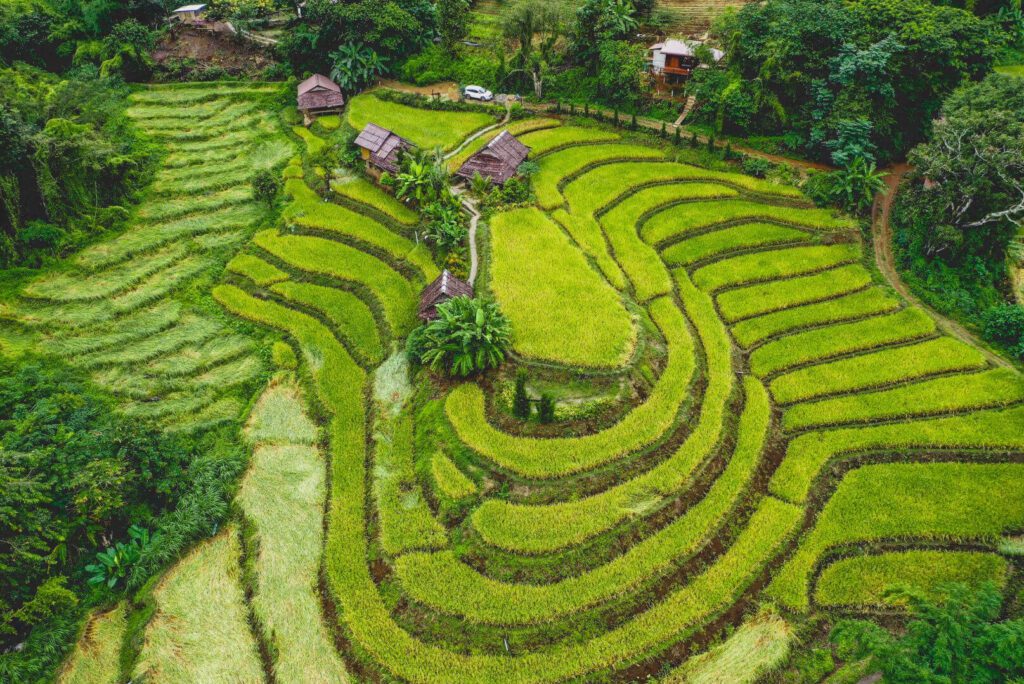
Serene mornings, crisp mountain air, and insights from Thailand’s tranquil north.
This post is my take on the best Northern Thailand hidden gems guide — a mix of hidden gems, slow journeys, and off-the-beaten-path adventures.
Most travelers heading north in Thailand stop at Chiang Mai, tick off a mountain temple or two, devour a few bowls of Khao Soi, maybe even hit Pai for that hammock life, and then move on. Nothing wrong with that. But as a Thai who grew up exploring this region,
I can tell you: the real north hides much more than the guidebooks ever show.
The places I return to year after year aren’t flashy. They’re mountain towns with their own unique character, valleys where coffee comes from the next hillside over, and markets where you trade genuine smiles with farmers more than souvenirs. They’re the kind of places where slowing down doesn’t feel like a choice — it just flows naturally.
I’ve been to the north of Thailand as a baby with hardly any recollection, as a teenager competing at a basketball tournament, in my late twenties curious about coworking culture, and now as someone who lives authentic travel and discovering hidden gems especially in northern Thailand, my favorite part in all of Thailand. This article isn’t only about getting there and the usual — it’s about how these magical spots genuinely changed the way I reflect on life forever. In fact, had I not visited Chiang Mai and rented a motorcycle on one particular trip after all of my casual visits, I would probably still be living that pub, party lifestyle in Bangkok and you wouldn’t be reading this right now.
If you’re planning a Northern Thailand itinerary, these are the places I’d take you.
Chiang Mai Off The Beaten Path: Vegan & Cultural Haven
I’ve had a strange, layered relationship with Chiang Mai. My very first visit? I was just a baby — no recollection, just family photos. The second time was in the early 2000s, when I came for a basketball tournament. That trip was all sports, between high schools of Chiang Mai, Bangkok, and the coastal provinces, and a single evening wandering Chiang Mai’s Night Bazaar. Just a blur of neon stalls and cheap T-shirts, nothing like the Chiang Mai I’d fall in love with years later.
It wasn’t until my late twenties that the city revealed its magic. I flew up for a coworking conference — as I was thinking of opening a space myself — and that was the beginning. The conference was great, but what stuck with me was the energy of the city: gentle locals, a café culture that rivals anywhere in the world, and a community where “slow life” doesn’t feel like you’re missing out on anything, in fact it is the opposite. I started with coworking spaces, rooftop bars, and coffeeshops in the Old City, spending evenings hopping with other participants between popular spots in the Old City. I thought that was Chiang Mai but the real Chiang Mai hidden gems are far from the Old City.

Then one trip, I rented a motorcycle for four days — I ended up extending that rental for four months! That changed everything. I ditched Google Maps, relying only on memory, intuition, and random tips from locals. That’s how I stumbled into the real Chiang Mai hidden gems — cruising to Samoeng for a loop via winding jungle roads, rolling up to Doi Suthep for misty mornings and cold waterfall plunges, easing into hot springs at San Kampaeng, and spending hours riding up in Mae Kampong’s sleepy wooden village. These are some of the best off the beaten path Chiang Mai rides I’ve ever done. Doi Suthep became my go-to for quick nature breaks as it’s in town, and Mon Jam was always the grounding landmark. Every road led somewhere unexpected, and that’s when Chiang Mai became more than a city — it became my playground for discovery. I can safely say, it kickstarted my new life and this company wouldn’t exist if it weren’t for that trip.
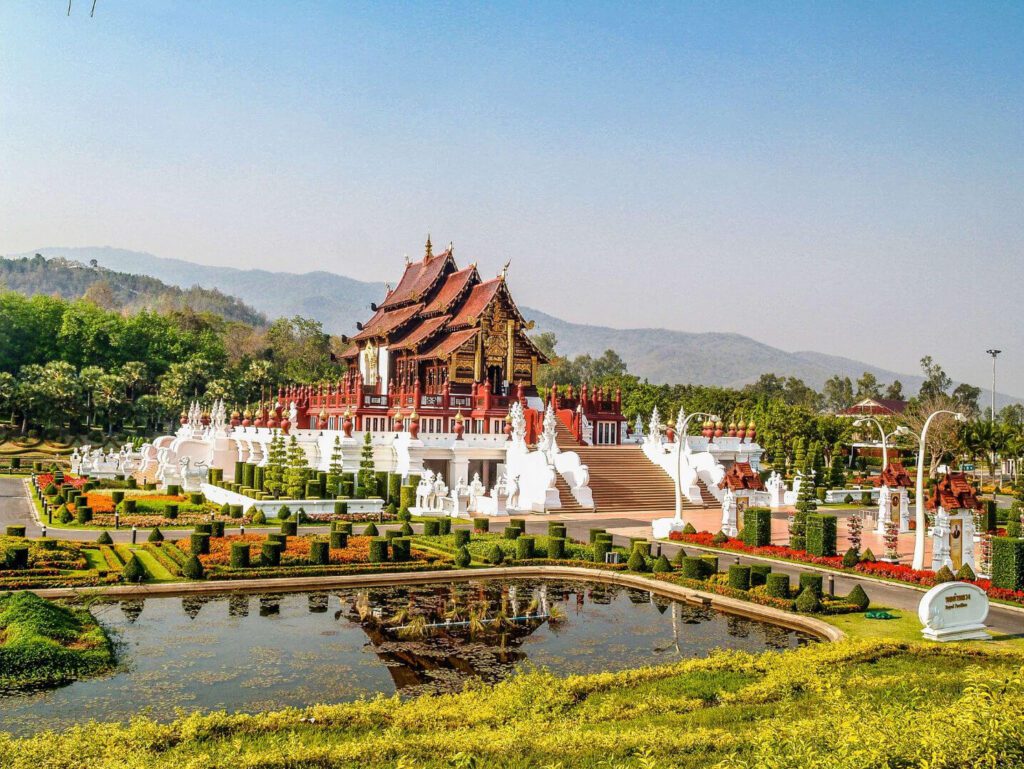
Chiang Mai is where I stopped traveling just to “see sights” and started traveling to feel connected. For me, those rides became more than just secret places in Chiang Mai — they were turning points. It’s not just about the vegan smoothie bowls (though I’ve had plenty) — it’s about the balance of culture, mountains, and modern creativity. And if you’re asking, yes, I still sneak back to the Night Bazaar sometimes. It’s different now, but for me it’s a marker of how far my Chiang Mai journey has come.
Northern Thailand Hidden Gems Map
Chiang Dao: Mountain Retreat
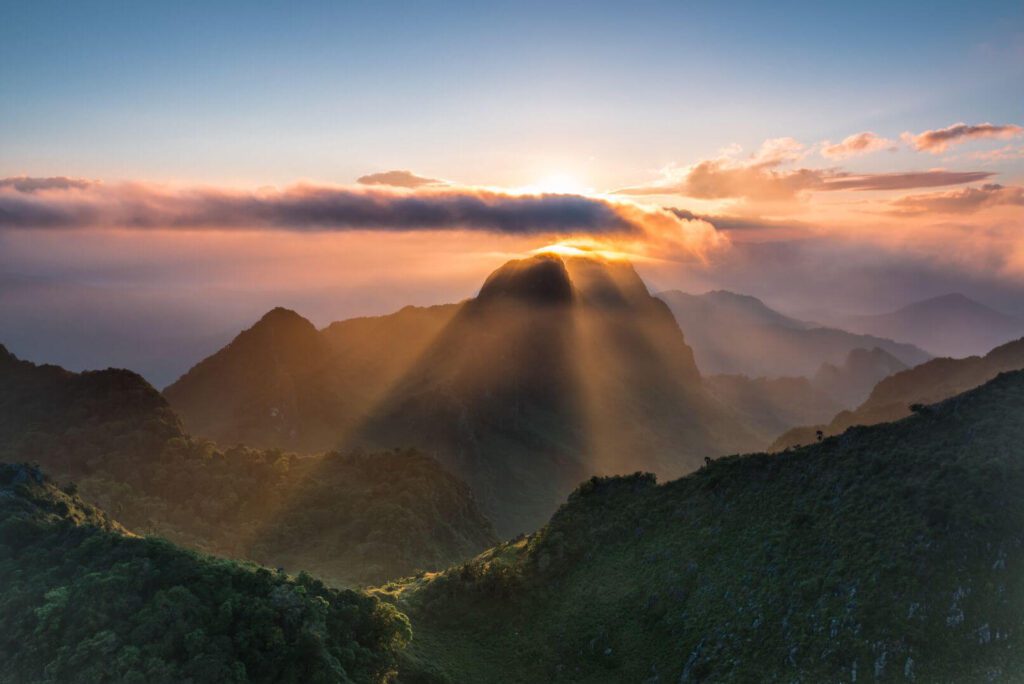
Chiang Dao, Thailand “City of stars” in Thai is my ideal and favorite escape, just 90 minutes north of Chiang Mai’s noisy superhighway. It’s the kind of place where you can slow down—choosing eco-conscious resorts that balance sustainability with comfort, or exclusive retreats where every detail is designed around pure relaxation, all set against views of breathtaking Doi Luang Chiang Dao—Thailand’s third-highest peak which is most spectacular in this Northern Thailand hidden gems guide.
The views here are exactly what I imagine when I think of northern Thailand—mountains all around, rice fields stretching out below, and the peak standing over everything. Paradise.
Whether you’re getting a massage in town or unwinding after a day of exploring, that backdrop is always there. It’s the reason I keep coming back, and why Chiang Dao sums up everything I love about the north.
The first time I came here, I stayed in a bamboo bungalow Airbnb with a view of Doi Luang’s limestone cliffs. I woke up to roosters, wandered out barefoot in the garden, and couldn’t believe I was still in the same country I’d just flown into from Bangkok. The air was cooler, crisper. Coffee farms decorate the hillsides, and you can sip a cup while literally watching the beans dry in the sun. Heaven.
Most travellers head straight for Pai, hoping to escape normal life. But Pai has become a victim of its own success—what was once a quiet mountain town is now crowded, busy, and more about chasing the scene than finding peace. Chiang Dao, on the other hand, is exactly what they might have been looking for all along. Just a straight road north from Chiang Mai, it’s quieter, more authentic, and surrounded by nature on every side. The world-famous Chiang Dao Caves stretch for kilometers, filled with Buddha statues left behind by pilgrims, making them some of the best caves in all of Thailand to explore.
The hot springs are not only natural but also beautifully maintained—I’m there almost every evening when I’m in town. And the hikes? Chiang Dao has some of the best in the north, with trails that climb into the ridgelines and surrounding forests. For me, this is why Chiang Dao Thailand remains one of the most peaceful in this Northern Thailand hidden gems guide.

Discover our Northern Thailand tours
Map of Chiang Dao’s hidden gems & Hot Springs.
If I were to design a tour here, it’d be simple: morning hike to a temple in the mountains, hot spring soak in the afternoon, and a family-style dinner in a stilted house. Nothing fancy, just real.
Chiang Rai: Borderland Secrets
Mention Chiang Rai and most people immediately picture the White Temple, Wat Rong Khun. And yes, it’s impressive, but what stuck with me most about Chiang Rai wasn’t just the architecture — it was how deeply Buddhism is woven into daily life here. Talking with the locals, from the temples to the walking street, you can feel the reverence everywhere.
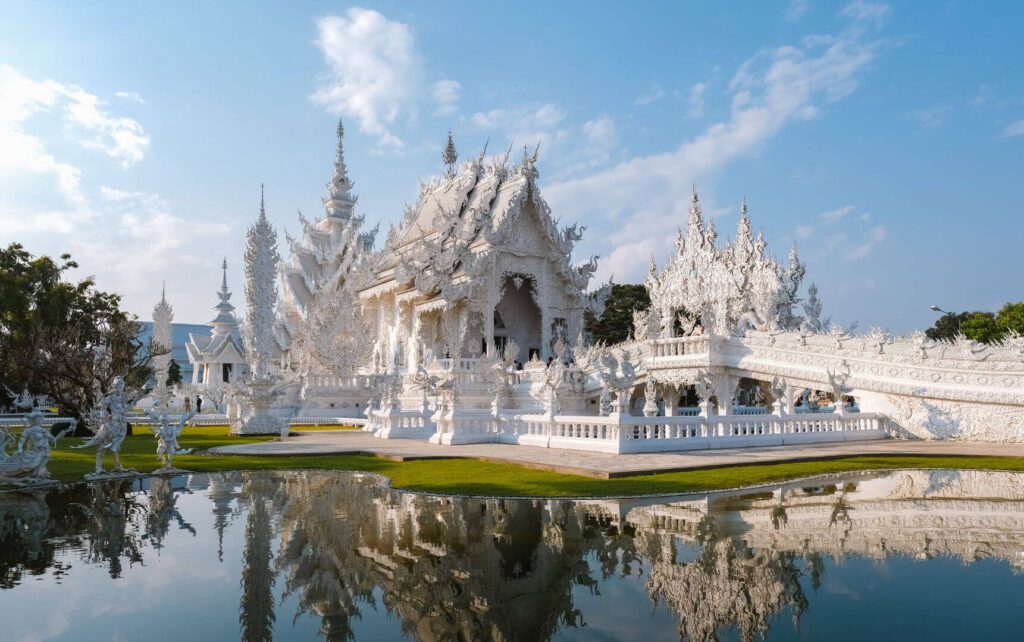
I came here on a spontaneous trip and ended up spending my time at Singha Park, wandering the walking street, and visiting a handful of the main temples. What stood out wasn’t how polished or tourist-ready things were, but the atmosphere. In Chiang Rai, Buddhism feels alive in a way that you don’t always see elsewhere in Thailand anymore — something people are still deeply connected to.
That’s what makes Chiang Rai different. The White Temple is worth the stop, of course, but the real value of coming here is seeing how the city still carries that sense of faith and tradition in its everyday rhythm. It’s one of those Chiang Rai hidden gems where spirituality and daily life blur, giving the province its own character.
Map of Chiang Rai’s hidden gems & the magestic White Temple.
Pai: Laid-Back Escape
Pai used to be one of those secrets whispered amongst travellers in the early 90’s. These days it’s firmly on the backpacker trail — reggae bars, smoothie stalls, and cheap hostels everywhere. But step off the main strip, and you’ll still find the kind of northern Thailand people dream about.
The road from Chiang Mai to Pai is legendary: 762 curves through mountains and jungle. I’ve ridden it myself a few times, and while it’s long, it’s also one of the most enjoyable rides in the north. Riding or driving instead of sitting in a car or bus makes a huge difference too — not only do you avoid car sickness, but you actually get to enjoy the ride of a lifetime.
One of my favorite rides in all of northern Thailand was a completely unplanned joy ride after visiting Pai Canyon, which led me straight to Mueang Paeng Hot Spring. I had no idea it was there, and stumbling upon it by chance was the perfect bonus to cap off an already amazing ride. Quiet, natural, and tucked away, it was exactly the kind of off-the-grid find that makes Pai worth it. This is why guides often list it among the hidden gems in Pai, and I can see why.
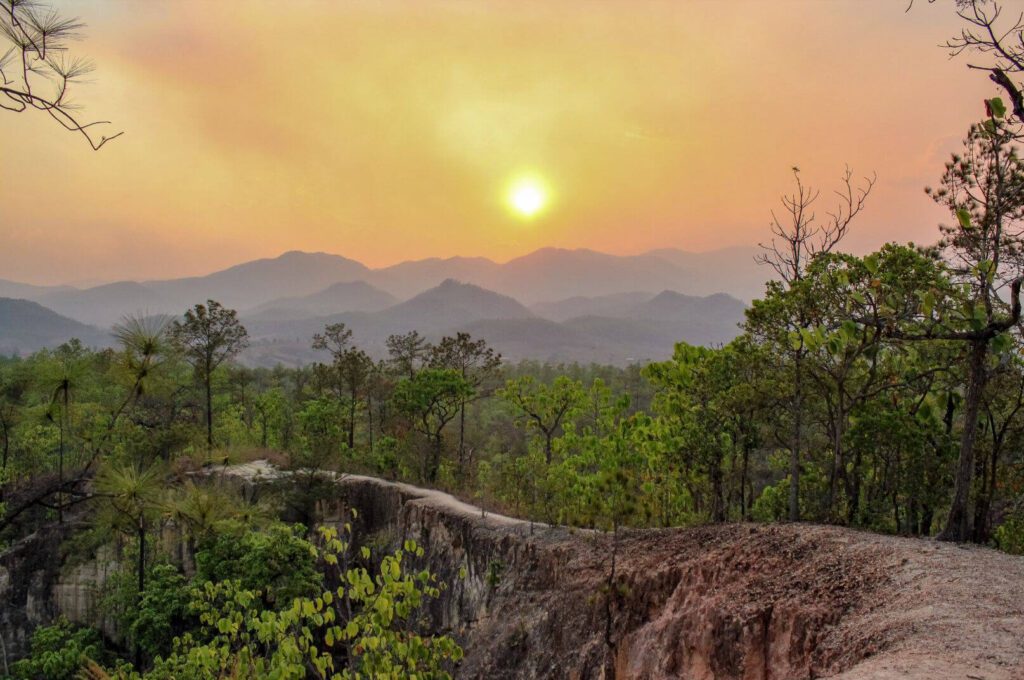
Heading toward Mae Hong Son is just as rewarding. I’ve never done the full loop, but even riding two or three hours out and back is simply amazing. It’s the essence of the Mae Hong Son loop itinerary — winding roads, surprise viewpoints, and hot springs tucked into the forest. One of my favorites is Sai Ngam Hot Spring, a quiet, mineral-rich pool shaded by trees. Unlike the boiling, sulphur-smelling types, this one is comfortable enough to sit in for hours. Locals swear by its healing properties, and after soaking there I even watched a stubborn deodorant rash clear up instantly.
So yes, Pai is a hotspot, but the essence is still there if you’re willing to explore a little further. Out in the valleys and along the valleys, it’s still heaven — the kind of place that makes you reset, forget the noise, and just enjoy the ride. No wonder so many travellers ask, “is Pai worth visiting?” — my answer is always yes, as long as you go beyond the main strip.
Map of Pai’s hidden gems & scenic routes to Pai Canyon.
Nan: Northern Soul
Nan doesn’t try to impress you, and that’s exactly why it does. Out by the Laos border, it’s a province most travelers skip, even though it has everything that makes northern Thailand special — scenery, culture, and people who still live simply and welcome you without pretense.
The temples here aren’t about size or grandeur, they’re about meaning. Wat Phumin is the best example. Its famous wall paintings show scenes of daily life, couples, and community, painted with a warmth that still feels relevant centuries later. It’s why Nan often shows up on a Nan Thailand travel guide that goes beyond mainstream spots.
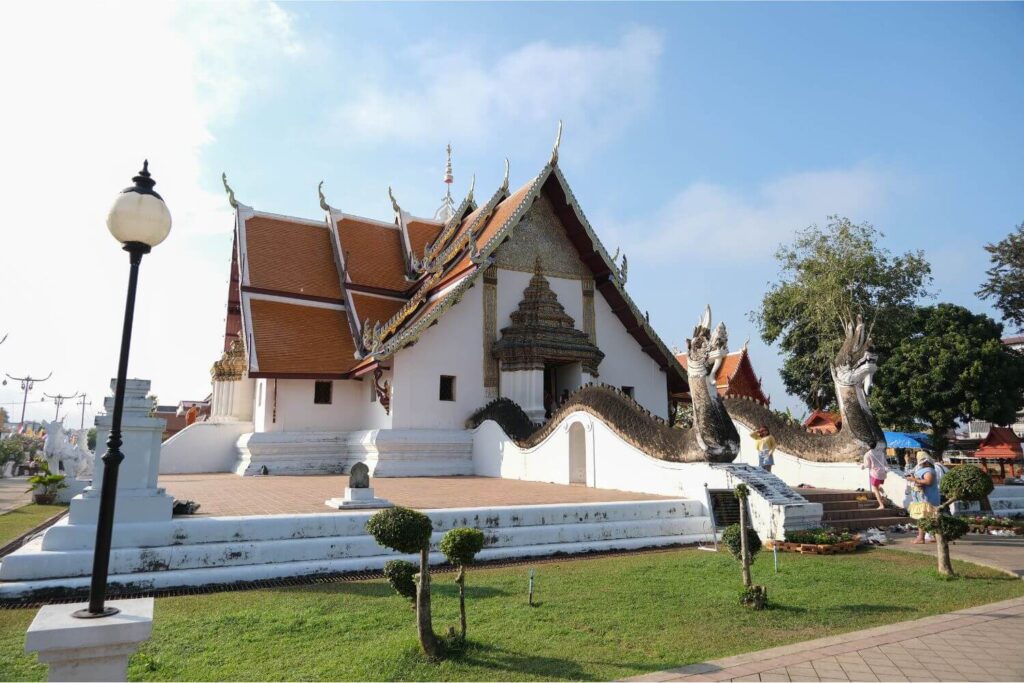
Markets and food in Nan feel the same way — unpolished, homely, and legit. Sitting shoulder to shoulder with locals over a bowl of noodles at the morning market, I realized I hadn’t seen another tourist all trip. It wasn’t prepared to be “authentic”; it just was. That’s the main difference.
And then there’s the road. Ride out of town and it doesn’t take long before you’re surrounded by valleys, rice fields, and impeccable views. At sunset, the whole place cools down and you catch yourself thinking you could stop right there and never leave. It’s not about ticking off sights, it’s about the feeling Nan leaves you with — genuine, welcoming, and still very much its own. For me, that’s why Nan Thailand remains one of the most soulful northern Thailand hidden gems.
For me, that’s why Nan Thailand remains one of the most soulful northern Thailand hidden gems.
Northern Thailand isn’t just scenery — it’s balance, tribes, and the quiet kind of luxury you only can appreciate once you’ve stepped away from the crowds. These hidden gems keep me coming back, not because they’re untouched, but because they’re alive in ways mass tourism can never match. Prefer beaches over mountains? Discover Thailand’s hidden gem islands — where quiet beaches and small-scale stays meet the same authenticity found in the north. Ready to explore the rest of Thailand? Start with our Thailand Hidden Gems Guide — a curated journey through the country’s most authentic valleys, caves, and islands.
When I share them, it’s not to spoil secrets but to keep them alive. Travelers who come this way with respect — and a taste for coziness alongside authenticity — indirectly help local families thrive without changing who they are. That’s the north I know, and it’s the only one I’ll always invite you to experience. Learn how we travel responsibly through our sustainable tourism approach.
Looking for a full city experience before heading into the mountains? My Chiang Mai guide covers temples, cafés, waterfalls, and day trips.
Map of Nan’s hidden gems & scenic routes to Sapan Waterfall.
Sustainable Travel Tips
Sustainable travel in northern Thailand means slowing down and choosing places that care for the land and its people. Stay at small eco-lodges in Chiang Dao or family-run homestays in Nan, where your visit helps preserve Lanna traditions and supports mountain communities. Choose shared transfers, refillable bottles, and locally sourced meals to keep your footprint light while exploring the northern valleys.
Learn more about our approach to responsible travel on our Sustainable Tourism page.
FAQ
What are the best hidden gems in Northern Thailand?
Northern Thailand’s hidden gems include Nan’s misty valleys, Chiang Dao’s limestone peaks, Chiang Rai’s quiet countryside, Phayao’s lakefront villages, and Lampang’s timeless temples. These regions offer grounded, authentic experiences shaped by local culture, mountain scenery, and warm community hospitality.
Why visit Northern Thailand instead of Chiang Mai alone?
Places like Chiang Dao, Nan, and Chiang Rai reveal the deeper character of the region with quiet temples, forest-lined roads, and slow-living mountain communities. They offer meaningful cultural encounters and natural beauty that goes far beyond the energy of Chiang Mai’s city center.
Is Northern Thailand good for sustainable travel?
Yes. The region is filled with eco conscious lodges, family run stays, and community-led projects that support local livelihoods. Traveling off path helps preserve traditions, landscapes, and the natural beauty Northern Thailand is known for.
How can I travel off the beaten path in Northern Thailand?
The best way is with our private driver who knows the northern routes intimately. Scenic roads through Chiang Dao, Nan, and Phayao open into sweeping valleys, misty viewpoints, and forest backroads reminiscent of New Zealand. Traveling with a dedicated driver and guide keeps the journey unhurried, personal, and low impact, and gives you access to places only locals know about.
When is the best time to visit Northern Thailand?
November to early February is the ideal season with cool air, clear skies, and excellent visibility for temples, trekking, and mountain viewpoints across Chiang Dao, Nan, and Chiang Rai. Travelers should avoid mid February to mid April due to burning season, when PM levels rise across the region.
Tell us your dates and vibe — we’ll build it in 24 hours.
Ready for a trip that actually feels like yours?
Every journey leaves a footprint — the difference is in how we choose to travel. At Off Path Thailand, we focus on keeping those footprints light. Discover how sustainable travel in Thailand connects comfort with care.
